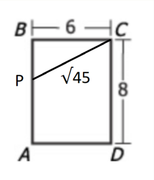Events & Promotions
|
|

GMAT Club Daily Prep
Thank you for using the timer - this advanced tool can estimate your performance and suggest more practice questions. We have subscribed you to Daily Prep Questions via email.
Customized
for You
Track
Your Progress
Practice
Pays
Not interested in getting valuable practice questions and articles delivered to your email? No problem, unsubscribe here.
- Nov 20
07:30 AM PST
-08:30 AM PST
Learn what truly sets the UC Riverside MBA apart and how it helps in your professional growth - Nov 20
01:30 PM EST
-02:30 PM IST
Learn how Kamakshi achieved a GMAT 675 with an impressive 96th %ile in Data Insights. Discover the unique methods and exam strategies that helped her excel in DI along with other sections for a balanced and high score. - Nov 22
06:30 AM PST
-08:30 AM PST
Let’s dive deep into advanced CR to ace GMAT Focus! Join this webinar to unlock the secrets to conquering Boldface and Paradox questions with expert insights and strategies. Elevate your skills and boost your GMAT Verbal Score now! - Nov 22
11:00 AM IST
-01:00 PM IST
Do RC/MSR passages scare you? e-GMAT is conducting a masterclass to help you learn – Learn effective reading strategies Tackle difficult RC & MSR with confidence Excel in timed test environment - Nov 23
11:00 AM IST
-01:00 PM IST
Attend this free GMAT Algebra Webinar and learn how to master the most challenging Inequalities and Absolute Value problems with ease. - Nov 24
07:00 PM PST
-08:00 PM PST
Full-length FE mock with insightful analytics, weakness diagnosis, and video explanations! - Nov 25
10:00 AM EST
-11:00 AM EST
Prefer video-based learning? The Target Test Prep OnDemand course is a one-of-a-kind video masterclass featuring 400 hours of lecture-style teaching by Scott Woodbury-Stewart, founder of Target Test Prep and one of the most accomplished GMAT instructors.
Kudos
Bookmarks
A
Be sure to select an answer first to save it in the Error Log before revealing the correct answer (OA)!
Difficulty:
 35%
(medium)
35%
(medium)
Question Stats:
77% (02:05) correct 23%
(02:08)
wrong
23%
(02:08)
wrong  based on 452
sessions
based on 452
sessions
History
Date
Time
Result
Not Attempted Yet
In rectangle ABCD, if point P (not shown) is to be randomly selected from line segment AB, what is the probability that the length of line segment PC will be less than √45 ?
A. 3/8
B. 3/5
C. 4/7
D. 5/8
E. 3/4
Attachment:
2024-01-29_02-02-09.png [ 37.63 KiB | Viewed 6898 times ]
Attachment:
2024-01-29_02-02-49.png [ 8.13 KiB | Viewed 8759 times ]
Kudos
Bookmarks
guddo
Let's calculate the location of point P on line segment AB such that the length of line segment PC is exactly √45. This means, we need to find such a BP that (BP)^2 + (BC)^2 = (PC)^2 = (√45)^2. This results in (BP)^2 + 6^2 = (√45)^2, which gives BP = 3.
Placing point P closer than 3 units from point B, along line segment AB, will decrease the length of PC. Conversely, placing point P further than 3 units from point B will increase the length of PC. Therefore, the probability that the length of line segment PC will be less than √45 is 3/8.
Answer: A.
Attachment:
GMAT-Club-Forum-3a4bycpf.png [ 20.2 KiB | Viewed 2199 times ]
Originally posted by MartyMurray on 28 Jan 2024, 18:27.
Last edited by MartyMurray on 23 Apr 2024, 06:19, edited 1 time in total.
Last edited by MartyMurray on 23 Apr 2024, 06:19, edited 1 time in total.
Kudos
Bookmarks
In rectangle ABCD, if point P (not shown) is to be randomly selected from line segment AB, what is the probability that the length of line segment PC will be less than √45?
Adding point \(P\) and line segment \(PC\) to the the figure, we get the following.

We see that we have a right triangle with sides \(BP\) and \(BC\) and hypotenuse \(PC\).
So, the length of \(PC\) will be \(√45\) when \(BP^2 + 6^2 = (√45)^2\).
In other words, the length of \(PC\) will be \(√45\) when \(BP^2 + 36 = 45\)
So, when \(PC = √45\), \(BP^2 = 9\), and \(BP = 3\).
So, for PC to be less than √45, BP must be less than 3.
Since the length of side \(AB\) is \(8\), \(3/8\) of the points on \(AB\) are less than \(3\) from \(B\).
(Note: While it's true that the point such that \(BP = 3\) cannot be included in the points on \(AB\) that are less than \(3\) from \(B\), since a point is infinitely small, the length of \(BP\) can effectively be up to \(3\), and thus \(3/8\) of the points on \(AB\) could be \(P\).)
Thus, the probability that \(PC\) is less than \(√45\) is \(3/8\).
A. 3/8
B. 3/5
C. 4/7
D. 5/8
E. 3/4
The correct answer is (A).















